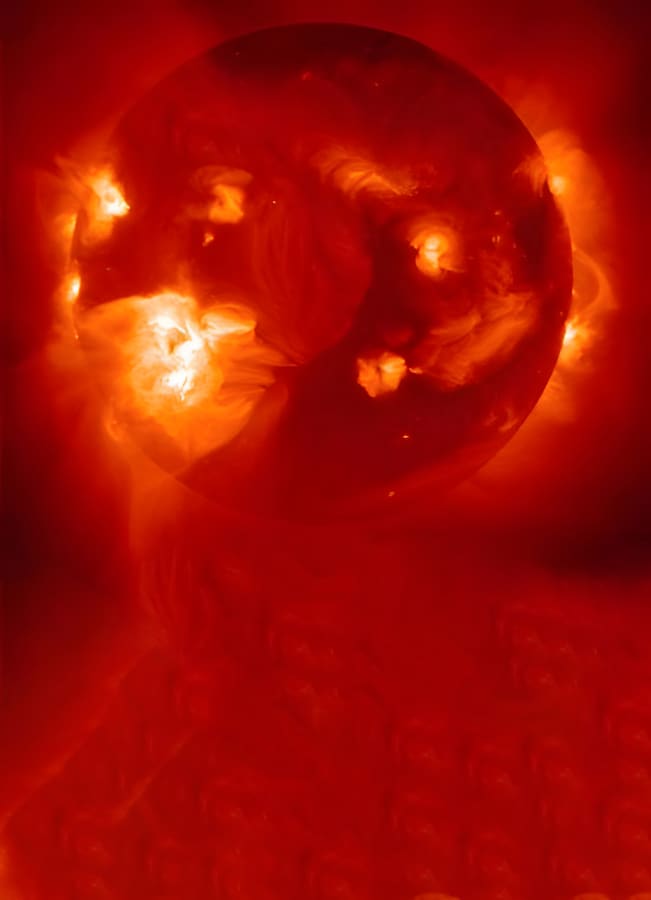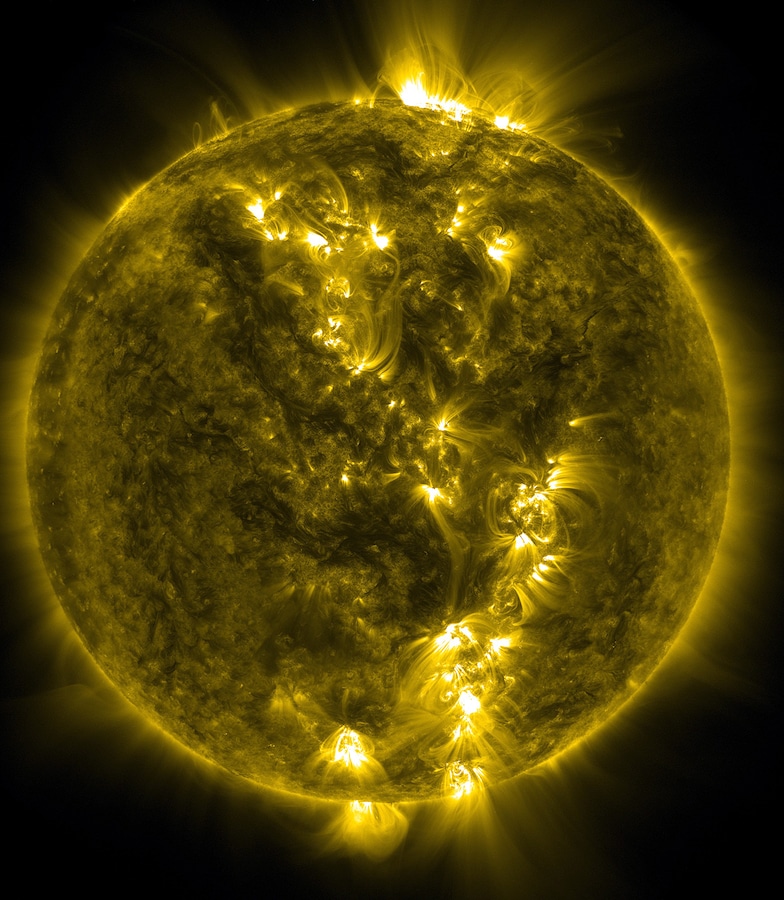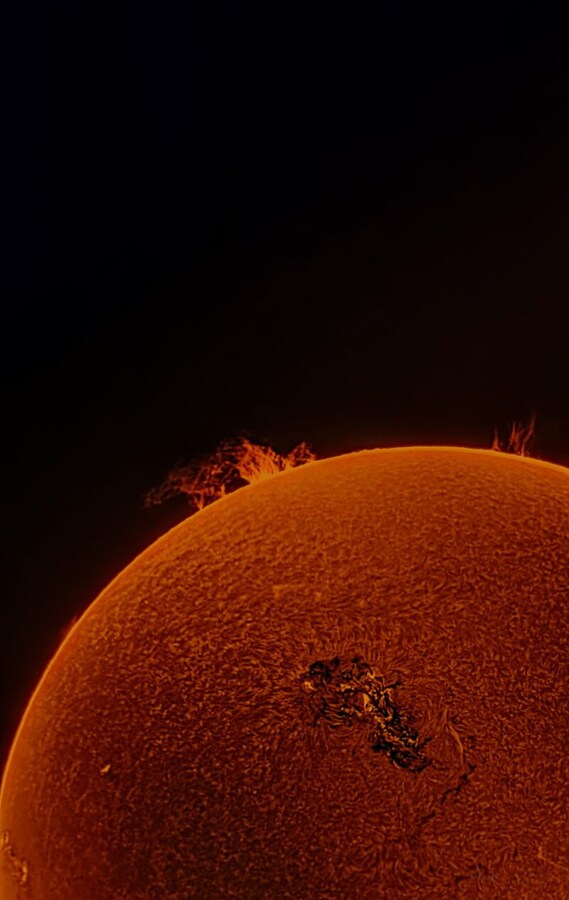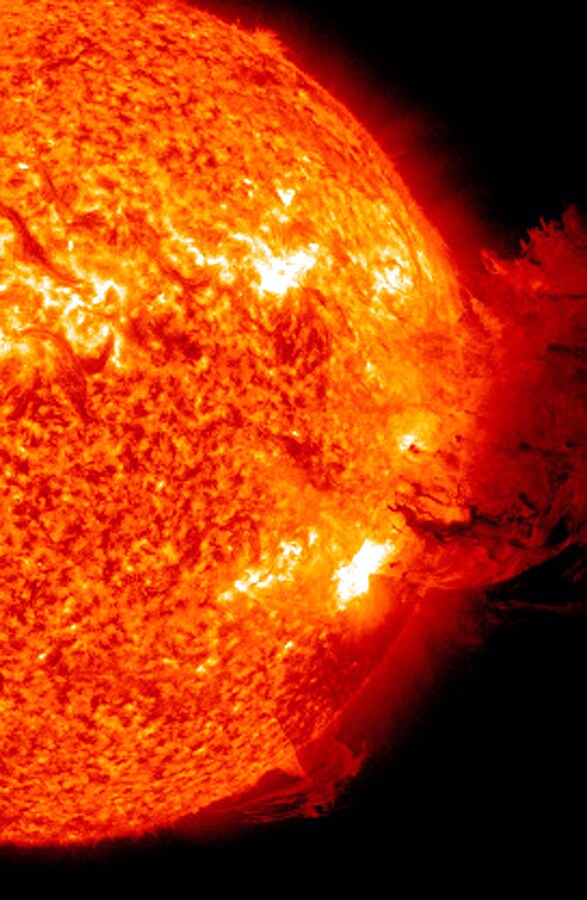NASA warns of another strong solar storm approaching Earth with expected blackouts
Produced by: Tarun Mishra

Incoming Solar Storm
A powerful stream of energized particles, known as a solar storm, released by the Sun is heading towards Earth. This could potentially cause radio blackouts and display aurora borealis or northern lights.

Source of the Storm
According to NASA's spaceweather.com, the storm originated from sunspot AR3664 on May 27. The event was classified as an X2.8 flare, one of the most intense solar activities in recent years.

X-Class Solar Flares
X-class solar flares are the most powerful types of solar flares. NASA describes them as "giant explosions on the sun that send energy, light, and high-speed particles into space."

Initial Impact
Earth has already experienced shortwave radio interruptions due to the solar storm. Fortunately, the coronal mass ejection (CME) from the latest eruption will not impact our planet directly.

Coronal Mass Ejection
Ryan French, a solar physicist at the National Solar Observatory in Boulder, Colorado, noted on X that the starburst caused a significant coronal mass ejection on the side of the Sun facing away from Earth.

Speed and Effects
A solar storm travels towards Earth at the speed of light, ionizing the top of the planet's atmosphere upon arrival. This ionization creates a denser environment for high-frequency shortwave radio signals, affecting long-distance communication.

Radio Signal Disruption
The charged particles from the storm cause electrons to collide more frequently with radio waves, leading to degraded or completely lost signals.

Future Concerns
There is concern within the scientific community about sunspot AR3664, which is expected to face Earth again around June 6. Future eruptions could generate additional geomagnetic storms with the potential to adversely impact Earth.

Monitoring and Precautions
Scientists and agencies are closely monitoring the situation. Preparations are underway to mitigate potential impacts on communication and other technologies that could be affected by the solar storm.
後話

